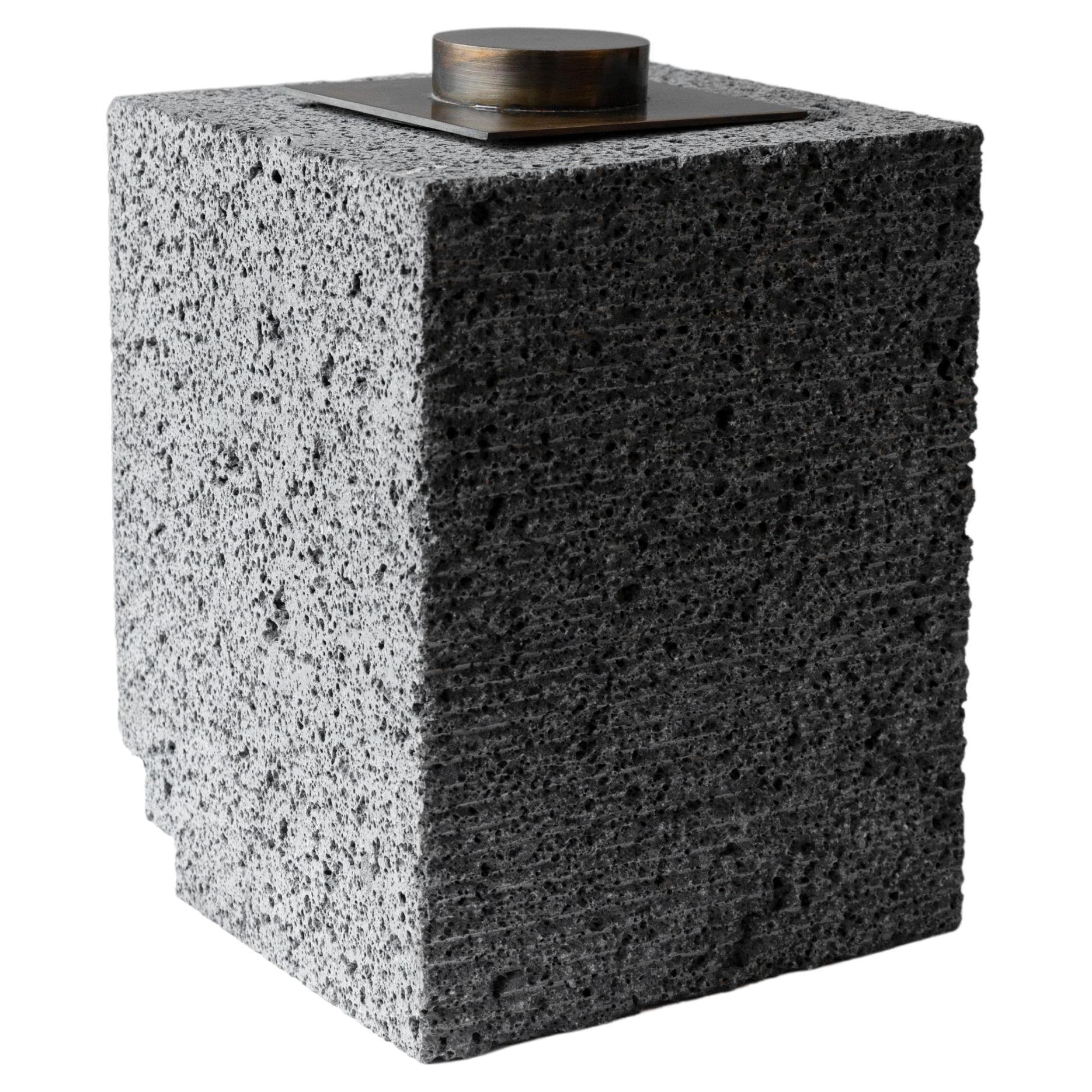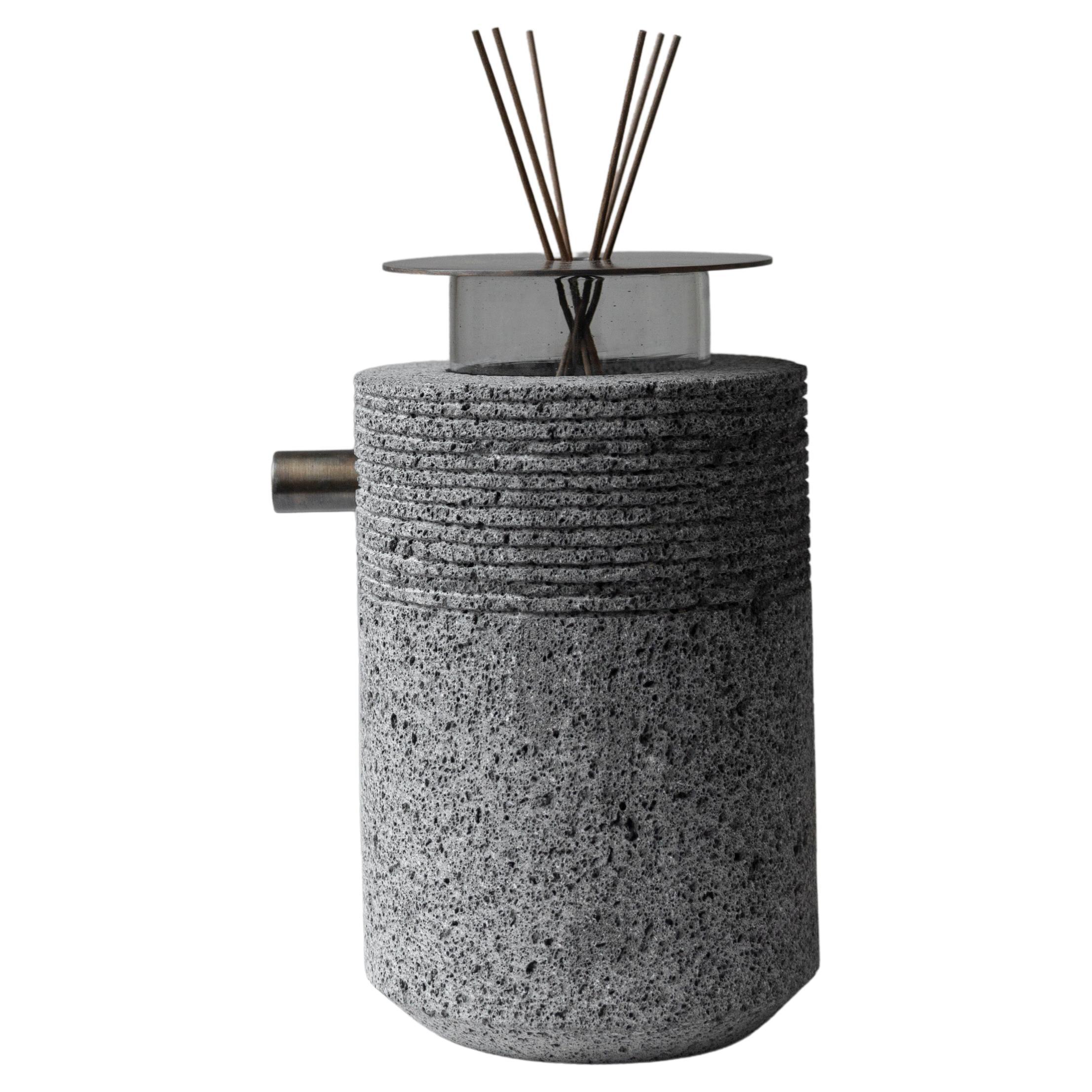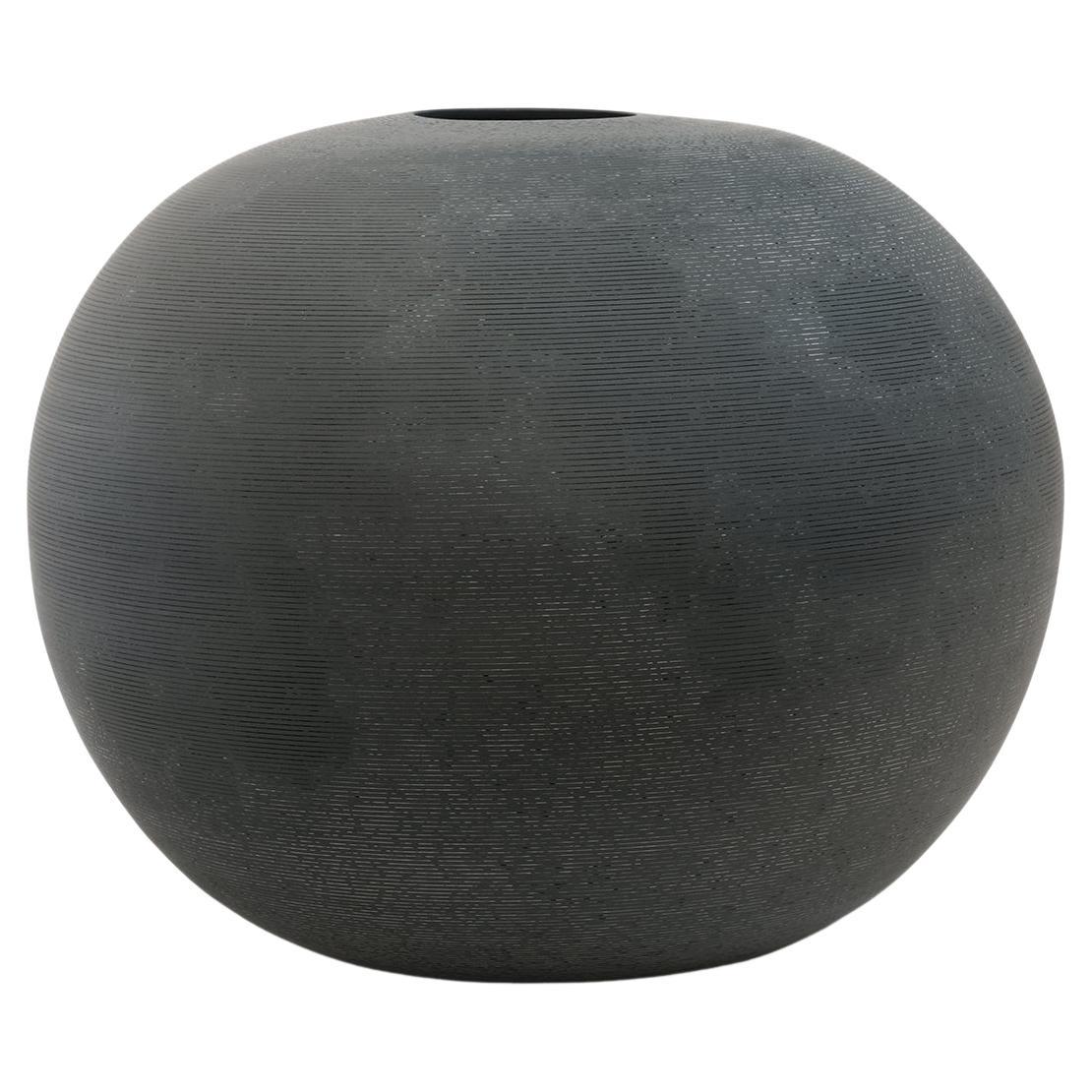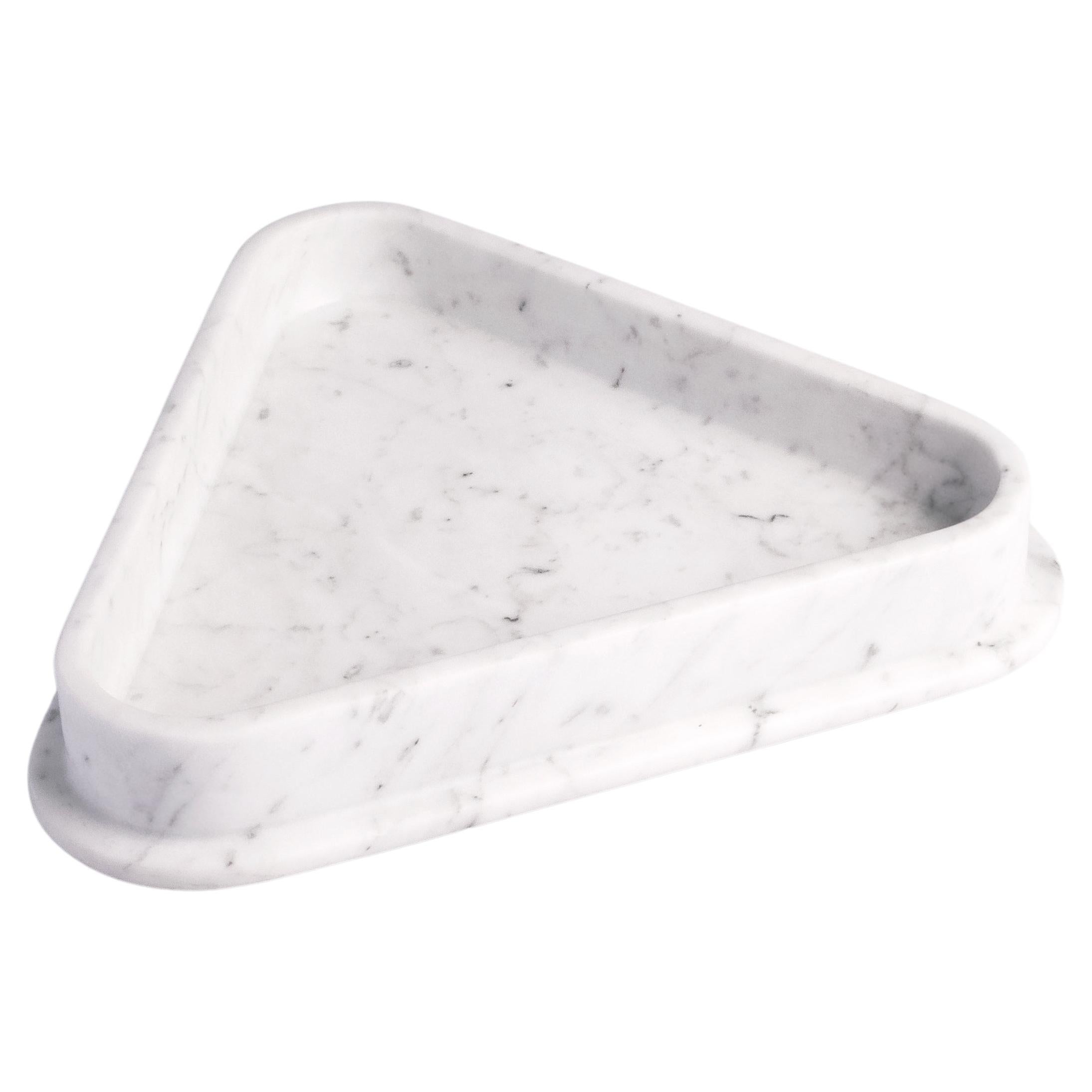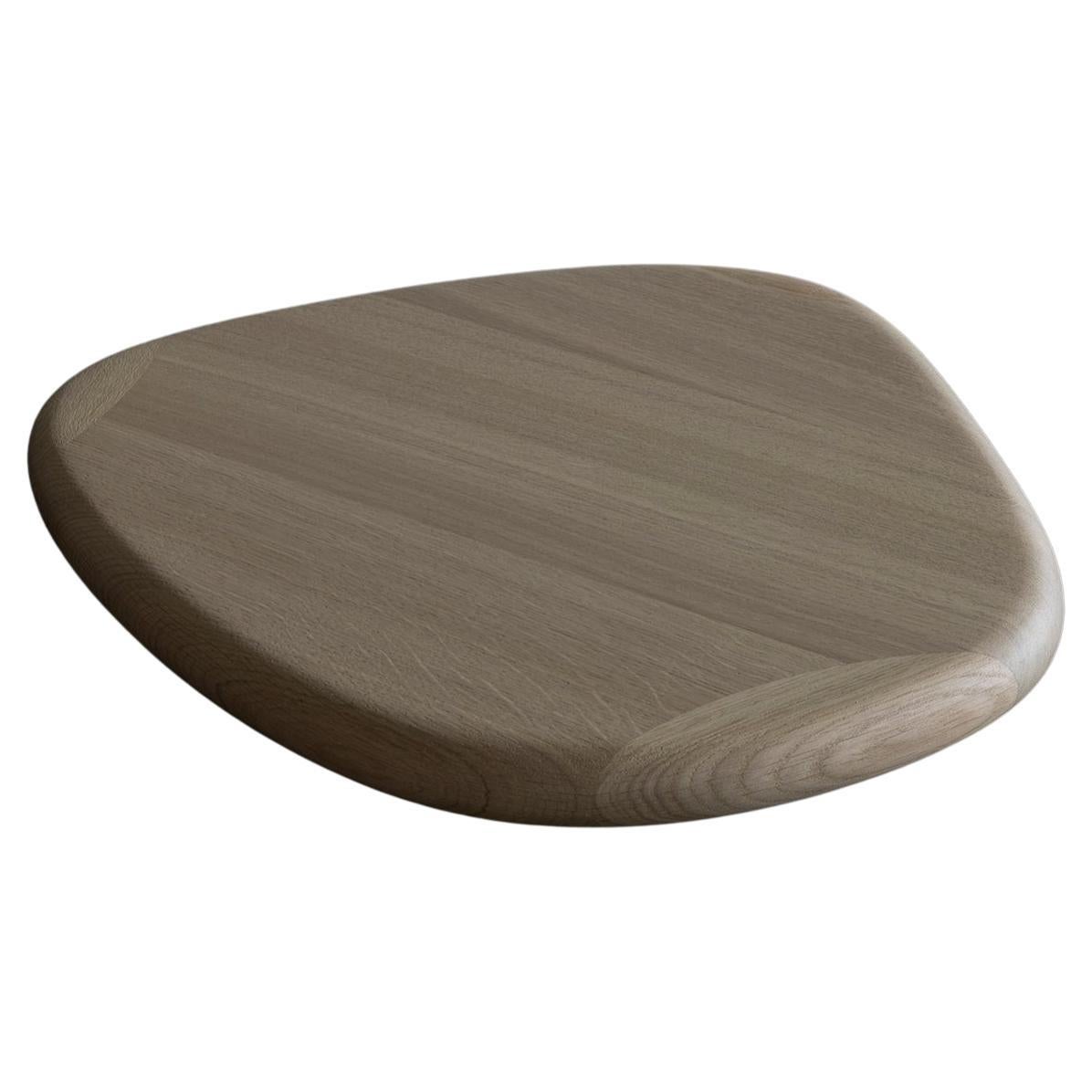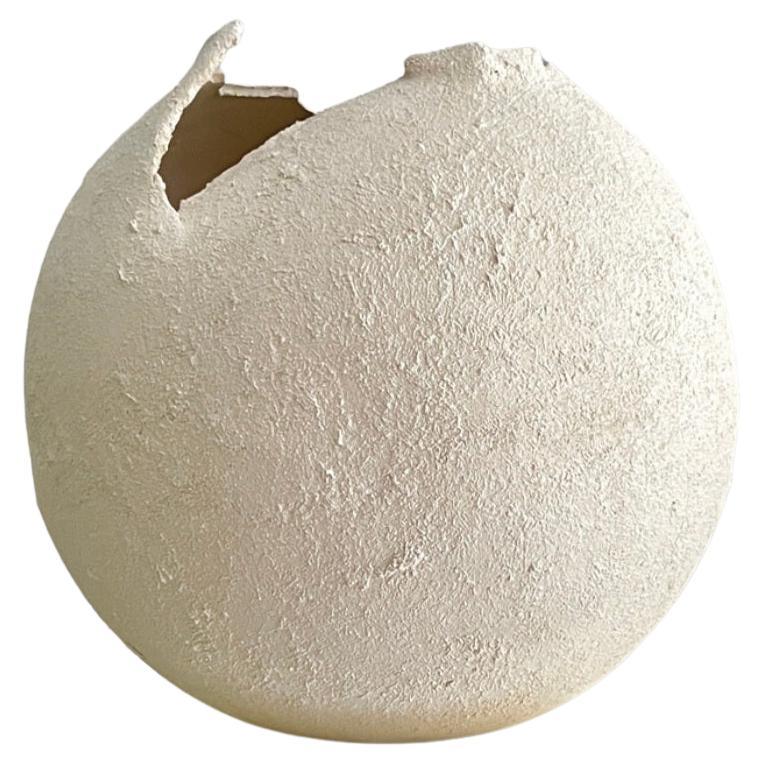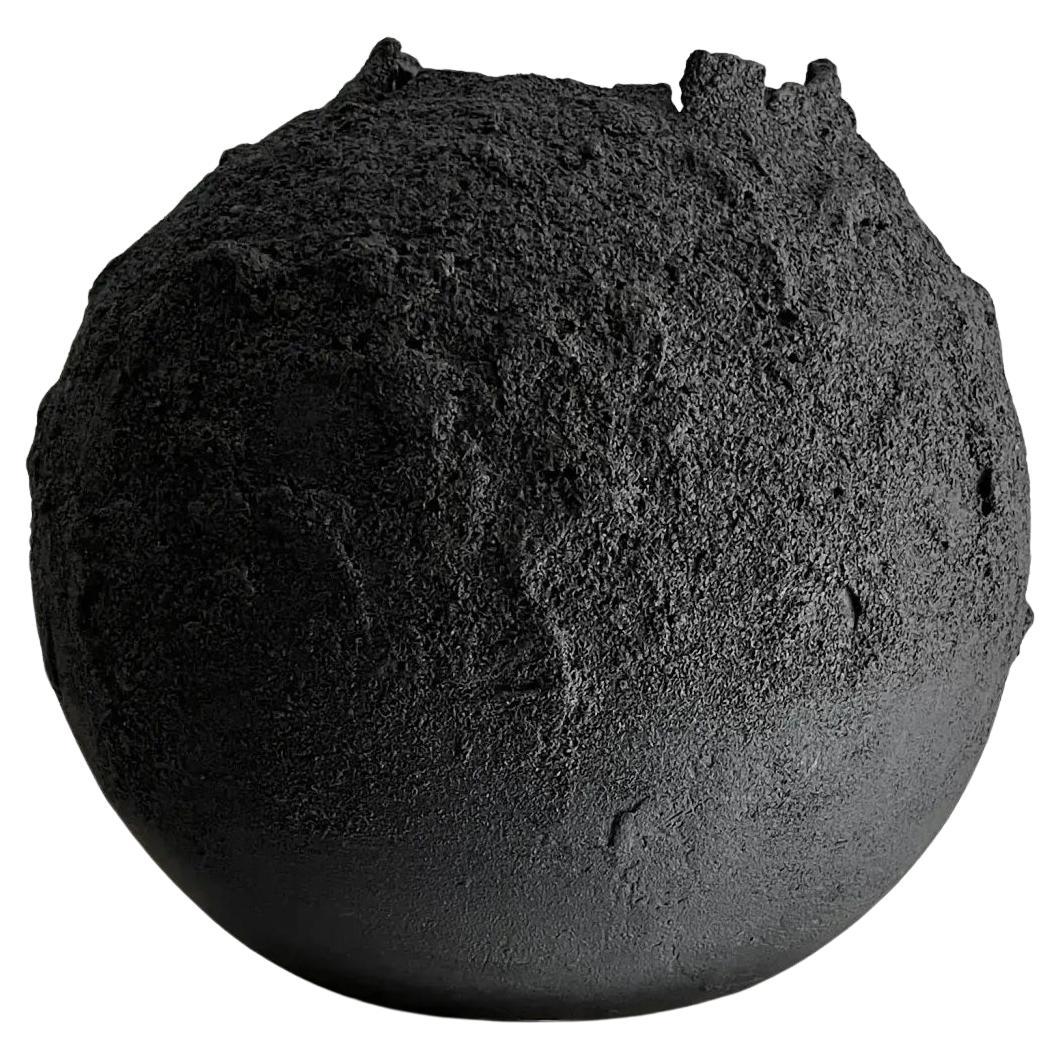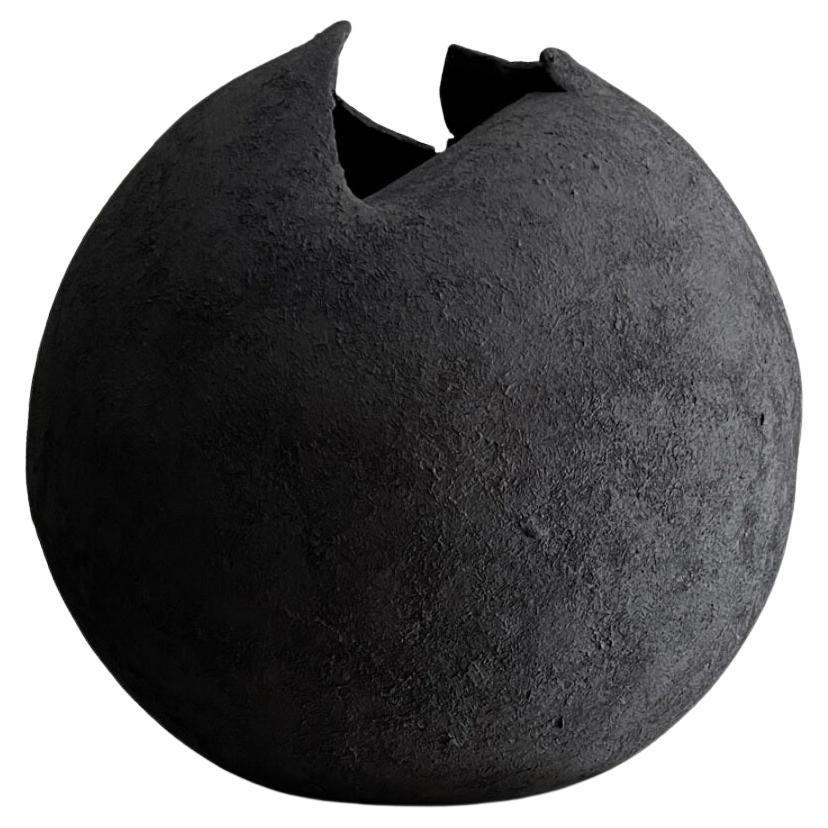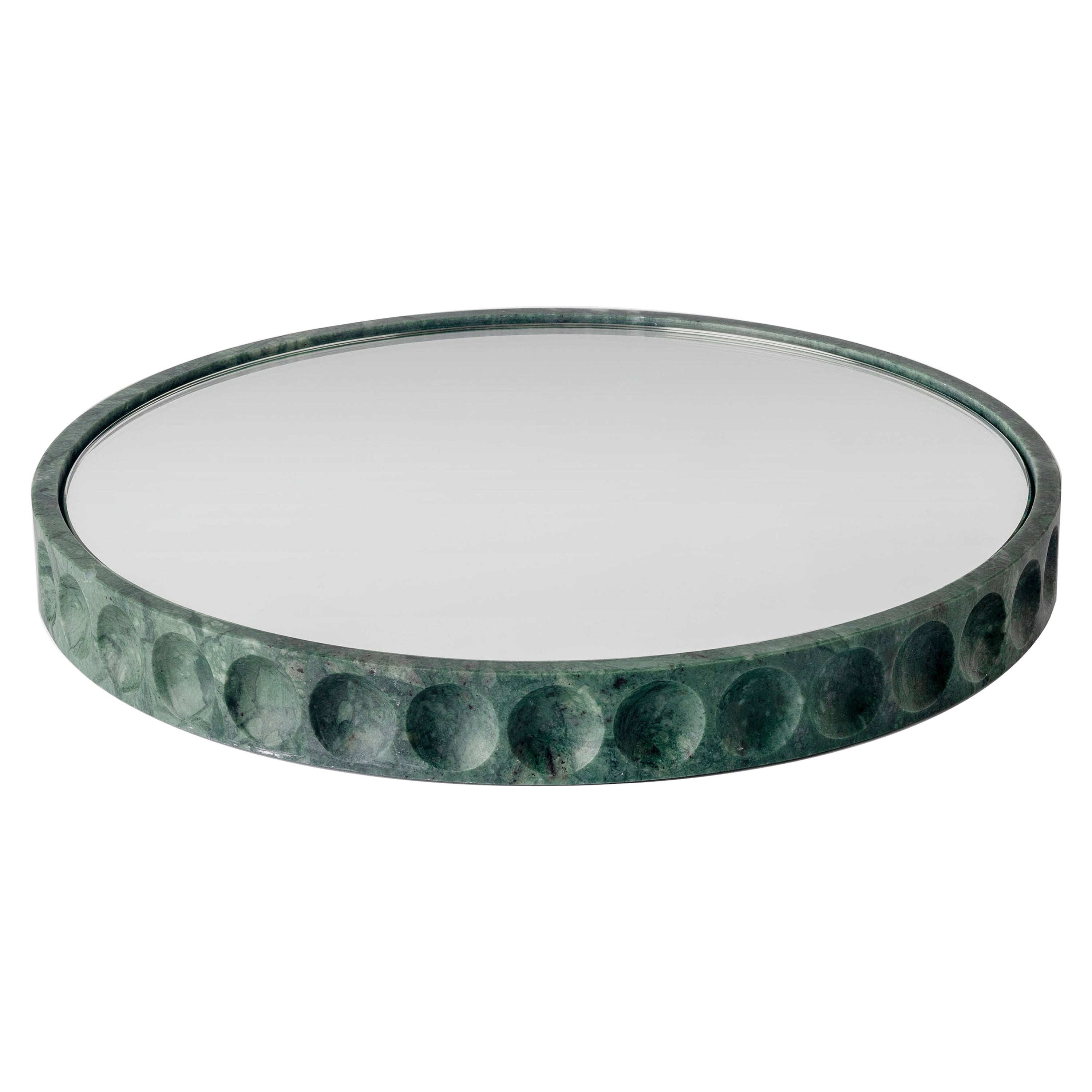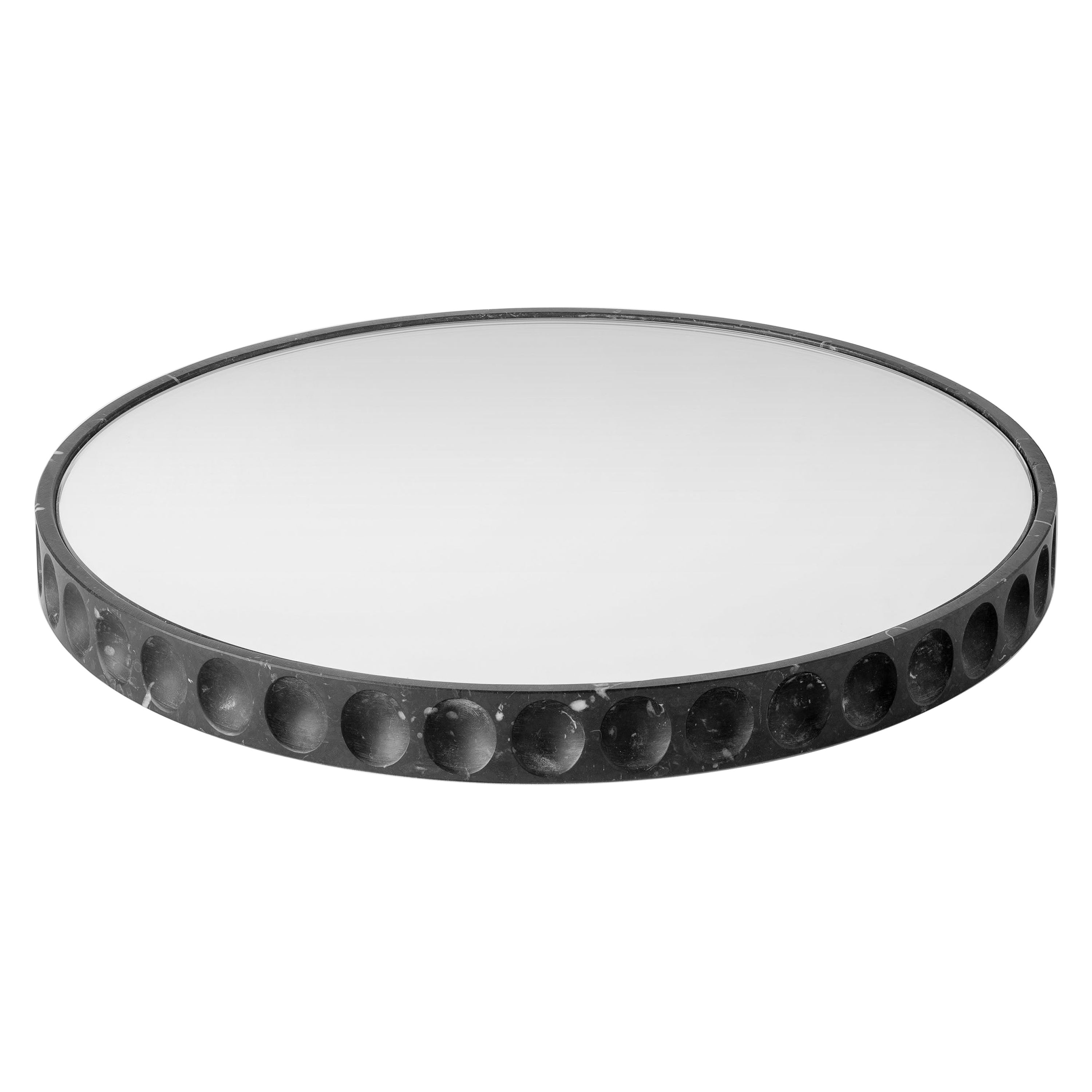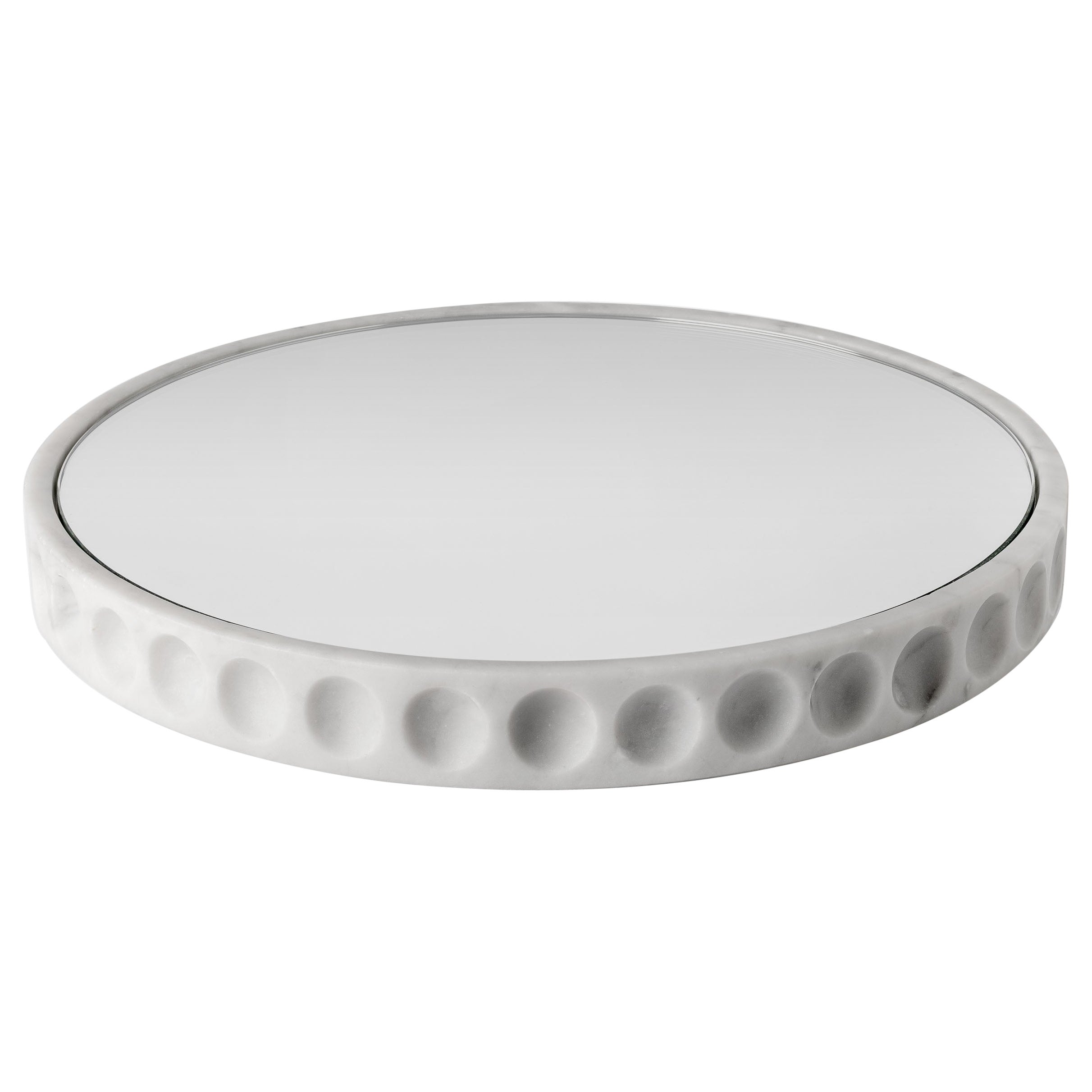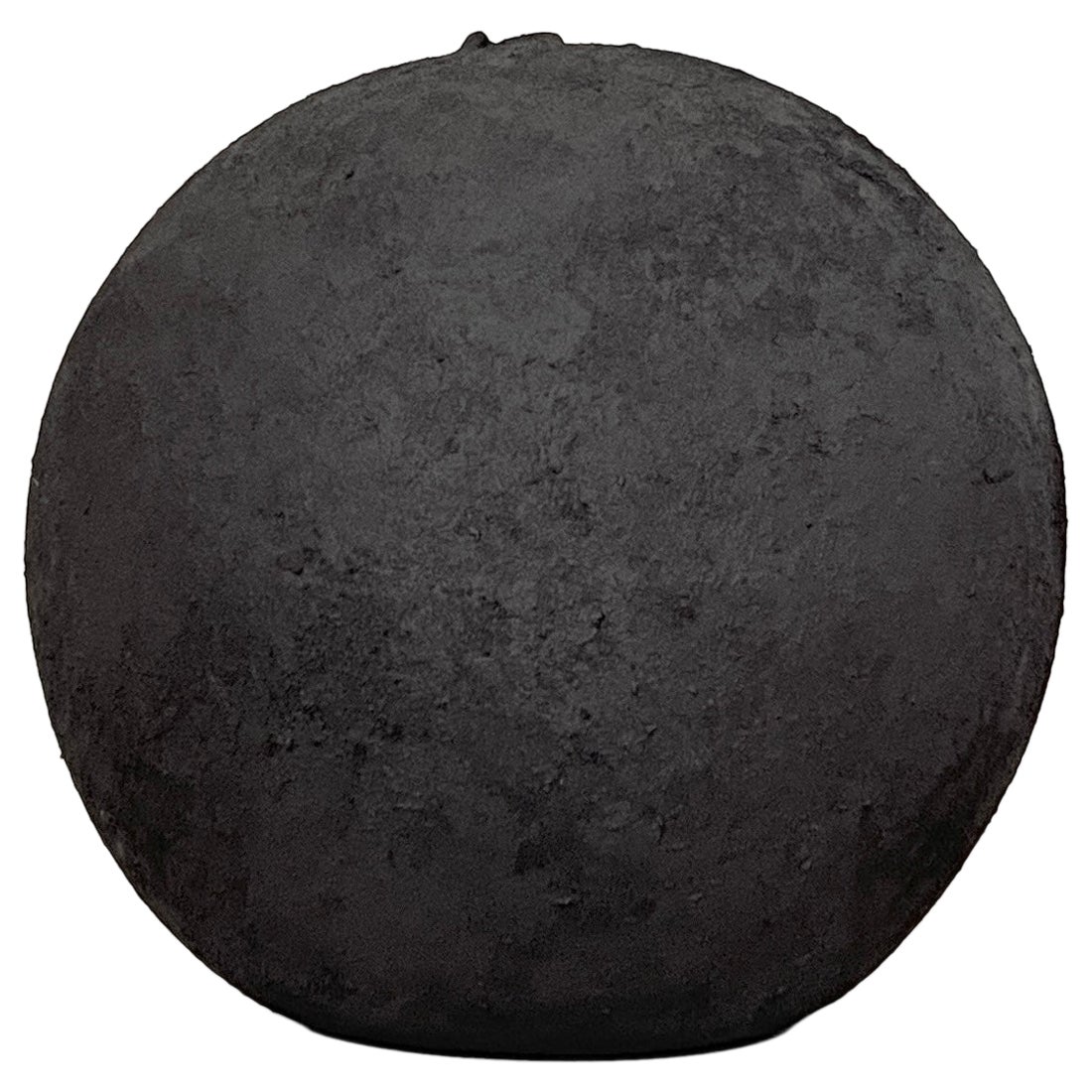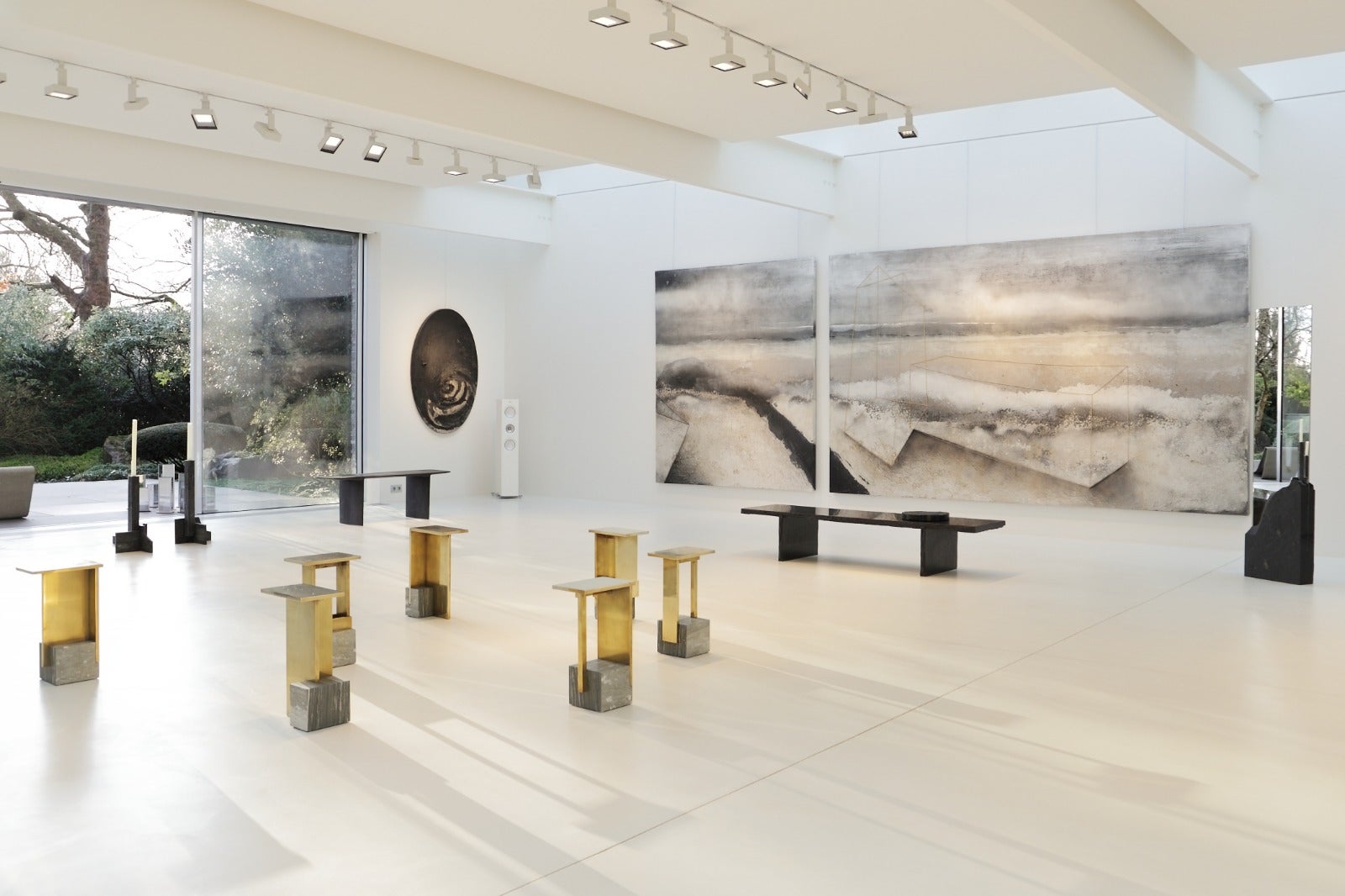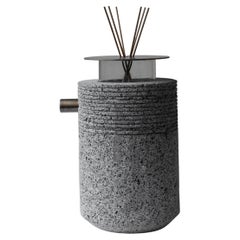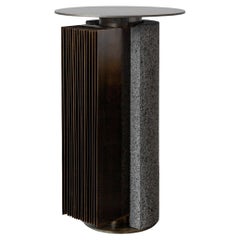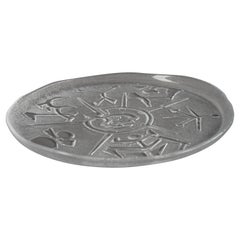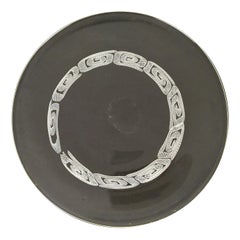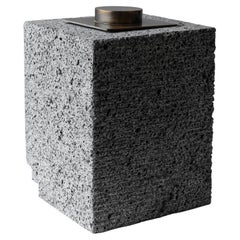
Arrebol Escalonado by Studioroca
View Similar Items
Want more images or videos?
Request additional images or videos from the seller
1 of 7
Arrebol Escalonado by Studioroca
About the Item
- Dimensions:Height: 12.01 in (30.5 cm)Width: 7.09 in (18 cm)Depth: 7.09 in (18 cm)
- Style:Post-Modern (Of the Period)
- Materials and Techniques:Stone,Other
- Place of Origin:Colombia
- Period:
- Date of Manufacture:2022
- Production Type:New & Custom(Current Production)
- Estimated Production Time:7-8 weeks
- Condition:
- Seller Location:Geneve, CH
- Reference Number:1stDibs: LU1219228339192
Galerie Philia
Galerie Philia is an international contemporary sculptural design and art gallery representing emerging and established designers and artists. The gallery is the brainchild of two brothers who share a lifetime passion for art, literature and philosophy. Their distinct academic background sets them apart from their peers, as it sees them following a rhizomatic and transcultural approach in the way they select works. This involves combining elements from multiple cultures in what becomes a network of harmoniously interconnected roots, ultimately revealing the beauty of each unique creation. The gallery’s non-hierarchical curation sits apart from the ephemerality of trends and focuses instead on the true aesthetic quality of the piece – alluring and timeless. Unlike others, Galerie Philia does not focus on a single style – whether minimalist, organic or raw – but rather embraces heterogeneity. The Galerie Philia takes pride in discovering new talents, providing them with multiple international platforms to showcase their latest creations. As well as propelling the newest generation of 21st century collectible design, Galerie Philia also works with internationally known design artists. Galerie Philia has a strong international presence, with galleries in Geneva, New York and Singapore. In addition to their permanent spaces, the gallery organizes temporary group exhibitions and artists residencies in first-class locations around the world.
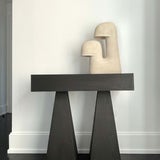
About the Seller
5.0
Diamond Seller
These expertly vetted sellers are 1stDibs' most experienced sellers and are rated highest by our customers.
Established in 2015
1stDibs seller since 2015
4,128 sales on 1stDibs
More From This SellerView All
- Arrebol Escalonado by StudiorocaLocated in Geneve, CHArrebol Escalonado by Studioroca. Dimensions: 18 x 18 x 30.5 cm. Materials: volcanics rocks essential oils diffuser. Studioroca is a Mexico City design studio focused on architecture, interior design and contemporary furniture. Its penchant for collaboration, the promotion of local talent, artisanal skills and natural materials, and its ever-present pull toward sustainable practices have seen the studio create highly emotive environments and unique functional pieces that speak of a forward-thinking, borderless approach to design. Intro Through architecture, interior design and furniture, STUDIOROCA portrays a distinct Mexican aesthetic, where sophisticated, elegant designs become bold statements of strong masculine lines and dark moody shades that contrast dramatically with elongated curves and highly textured surfaces. Based in Mexico City, the studio has, since its inception, offered much more than simple design solutions, its impetus always being to meaningfully improve lives through design. By promoting, supporting and offering a platform for other Mexican designers in its two stores in Polanco and Condesa, STUDIOROCA has been at the forefront of the modern-day Mexican design movement for over 15 years. The studio’s ability to artfully blend its own architecture and interior design with both local and international product is testament to its glocal outlook. While proudly Mexican and inherently influenced by the country’s culture and craftsmanship, its designs talk to a cosmopolitan, international sense of style. STUDIOROCA’s respect for the environment and reverence of traditional skills has led to the pursuit of sustainable practices, while its affinity for collaboration and promotion of artisanal skills has seen the studio produce work in conjunction with countless talented designers and craftspeople. Its confidently utilitarian designs are the result of risk-taking, boundary-pushing processes that emerge from STUDIOROCA’s constant quest to establish innovative solutions, while simultaneously respecting each of its projects’ unique locations, incorporating the surrounding environment into the design language. Working closely with clients, a personal rapport ensures delving into the core of every design requirement, leading to the ultimate achievement of deeply embedded needs. Ultimately, what STUDIOROCA presents is a fresh iteration of Mexican design, a version which is at once moving, intoxicating and comforting. History STUDIOROCA was founded by Carlos Acosta and Rodrigo Alegre. When, in 2002, the two independent Mexico City architects were commissioned to work collaboratively on the architecture and interiors of a new spa, they were frustrated by the lack of affordable furniture available, and embarked on designing their own pieces for the project. And so STUDIOROCA was born. Initially a furniture store in the heart of the then up-and-coming leafy suburb of Condesa, it has developed into a fully fledged architecture and interior-design studio, with another store in the city’s high-end design district of Polanco, which opened in 2011. Its line of furniture, all designed and manufactured in Mexico, had humble production beginnings in a small kitchen-design factory, a foundation that has carried through into the studio’s current philosophy of small-scale, high-quality production. In conjunction with its own range of functional pieces, STUDIOROCA has always invited other local designers to showcase their work in its two stores, and, what started with three additional designers’ pieces in 2002, has led to collaborations with many more, now presenting the limited-edition work of 28 Mexican designers through its UNION- brand, while continuing to retail exclusive international brands such as Tom Dixon, Moooi and GAN. 2 More recently, the studio’s architectural and interior projects have included large housing developments and hotels, fully employing STUDIOROCA’s 360-degree approach to design. Founders and team Architects by training, founders Carlos Acosta and Rodrigo Alegre prefer to follow an unconventional, integrated model of design that incorporates its many varied facets, allowing their two unique approaches to complement one another. Rodrigo, who graduated from Universidad Anáhuac Norte, is able to envision how color and texture will combine as he explores the emotive nuances he wishes to create within a new environment. His abstract thoughts are brought to life by Carlos, the rational half of the design duo. Trained at Universidad Iberoamericana, with a student exchange to the University of Texas, Carlos’ ability to grasp volumes and spaces brings dreams to fruition through the perfect positioning of wall divisions, furniture pieces and light-streaming windows. Their small dedicated team of designers and architects plays an integral role in realizing the studio’s ambitious visions, with over 200 projects having been completed by this intimate team. Beyond designing, these passionate professionals offer practical solutions, bringing their experience in all forms of design to manifest in big-picture thinking that pays attention to detail, celebrates collaboration and goes the extra mile. The approachable, personal style with which the STUDIOROCA team works is a reflection on the responsibility its people place on themselves as architects and designers who venture beyond the drawing board. Sustainability STUDIOROCA’s focus on sustainability has seen the company establish itself as a trailblazer in the realization of buildings and furniture pieces that are produced with a sense of conscience and responsibility, taking into account the full production chain, from material source to distribution of wealth. The studio has done away with environmentally harmful varnishes on its furniture pieces, and now only use FSC-certified hardwood. It also pledges to keep materials to a minimum, a consideration most appreciated in its 77 range of furniture, where only the necessary functional structures have been designed, and where small leftover pieces of wood from bigger cuts are utilized, rather than sourcing new pieces. This approach continues in its architecture and interior designs, with 80% of materials sourced locally. This, coupled with its use of solar panels, the harvesting of rainwater, and the inclusion of indigenous gardens in its projects, has led to STUDIOROCA’s application for Leadership in Energy and Environmental Design (LEED) certification, which is currently under review. For the studio, sustainability has a much further reach than the natural environment, however. Its projects take into account social, cultural and economic sustainability too, by ensuring its production chain – from the craftspeople producing hand-worked elements, to its low-environmental-impact manufacturing line – all sits within Mexico so that the 3 communities benefiting financially are those who have been an integral part of the process. Architecture In STUDIOROCA’s architectural projects, authentic materials that are true to their Mexican origin, such as local mountain rocks, regional marble and indigenous wood, are utilized in new ways to highlight their natural rawness, deep texture and prized imperfections, imbuing buildings with unique character. It’s through such character that every structure portrays its personality, suited to the people who live, work and relax within it. This unpretentious use of materials follows through to metals, which are encouraged to rust and patinate as the building interacts with nature’s elements and becomes part of the environment surrounding it, giving projects an essential sense of place, where the here and now is as important as the then and there. Interior design STUDIOROCA’s interior style leans toward textured materials and dark hues contrasted with paler wood and lighter accent tones. These evocative, luxurious interiors are enlivened by carefully considered lighting that enhances the tonality of moody dark browns, deep blues and a spectrum of blacks, and highlights textures through illuminated reflections. Where environments dictate a paler palette, textures and materials make up the necessary contrast. Local willow wood on wall panels, flooring made from recinto volcanic rock, and countertops decorated with Mexico’s retapado marble become talking points, made even more appealing with plant life and greenery introduced indoors. Furniture Combining its deep respect for handcrafted, artisanal product, and its future-forward approach to technology and innovation, STUDIOROCA’s range of furniture places emphasis on high-quality offerings, producing its ranges in low quantities, often customized to suit the specific requirements of its varied projects. Veering away from industrialized production lines, it employs sophisticated hand-worked machinery, in line with its approach to sustainability and simplicity. The studio’s premiere collection (2002-2008) was shaped by a groundbreaking application of materials and forms, resulting in award-winning designs that set contemporary Mexican design on the map. Pieces from this collection were shown at Fabrica Mexicana and Museo de Arte Moderno in Mexico City and in the MoMA store in New York. The 2008 Eco collection initiated a change in the production of STUDIOROCA’s furniture pieces, adapting a sustainable view regarding design – a philosophy that continues to guide the studio’s practices today. Sourcing FSC-certified wood, eliminating varnishes, and using local materials wherever possible, this collection was the start of a conscious undertaking to work with local artisans and support local industry, an outlook that was celebrated at the launch of the Eco range at the Mexican Gallery...Category
2010s Colombian Post-Modern Centerpieces
MaterialsStone
$8,915 / item - Arrebol Tibor Diffuser by StudiorocaLocated in Geneve, CHArrebol Tibor diffuser by STUDIOROCA Dimensions: W 18 x D 18 x H 30.5 cm Materials: Volcanic rock, polished brass plated steel, glass. Includes 1 essential oil 20mL bottle. STUDIOROCA is a Mexico City design studio focused on architecture, interior design and contemporary furniture. Its penchant for collaboration, the promotion of local talent, artisanal skills and natural materials, and its ever-present pull toward sustainable practices have seen the studio create highly emotive environments and unique functional pieces that speak of a forward-thinking, borderless approach to design. Intro Through architecture, interior design and furniture, STUDIOROCA portrays a distinct Mexican aesthetic, where sophisticated, elegant designs become bold statements of strong masculine lines and dark moody shades that contrast dramatically with elongated curves and highly textured surfaces. Based in Mexico City, the studio has, since its inception, offered much more than simple design solutions, its impetus always being to meaningfully improve lives through design. By promoting, supporting and offering a platform for other Mexican designers in its two stores in Polanco and Condesa, STUDIOROCA has been at the forefront of the modern-day Mexican design movement for over 15 years. The studio’s ability to artfully blend its own architecture and interior design with both local and international product is testament to its glocal outlook. While proudly Mexican and inherently influenced by the country’s culture and craftsmanship, its designs talk to a cosmopolitan, international sense of style. STUDIOROCA’s respect for the environment and reverence of traditional skills has led to the pursuit of sustainable practices, while its affinity for collaboration and promotion of artisanal skills has seen the studio produce work in conjunction with countless talented designers and craftspeople. Its confidently utilitarian designs are the result of risk-taking, boundary-pushing processes that emerge from STUDIOROCA’s constant quest to establish innovative solutions, while simultaneously respecting each of its projects’ unique locations, incorporating the surrounding environment into the design language. Working closely with clients, a personal rapport ensures delving into the core of every design requirement, leading to the ultimate achievement of deeply embedded needs. Ultimately, what STUDIOROCA presents is a fresh iteration of Mexican design, a version which is at once moving, intoxicating and comforting. History STUDIOROCA was founded by Carlos Acosta and Rodrigo Alegre. When, in 2002, the two independent Mexico City architects were commissioned to work collaboratively on the architecture and interiors of a new spa, they were frustrated by the lack of affordable furniture available, and embarked on designing their own pieces for the project. And so STUDIOROCA was born. Initially a furniture store in the heart of the then up-and-coming leafy suburb of Condesa, it has developed into a fully fledged architecture and interior-design studio, with another store in the city’s high-end design district of Polanco, which opened in 2011. Its line of furniture, all designed and manufactured in Mexico, had humble production beginnings in a small kitchen-design factory, a foundation that has carried through into the studio’s current philosophy of small-scale, high-quality production. In conjunction with its own range of functional pieces, STUDIOROCA has always invited other local designers to showcase their work in its two stores, and, what started with three additional designers’ pieces in 2002, has led to collaborations with many more, now presenting the limited-edition work of 28 Mexican designers through its UNION- brand, while continuing to retail exclusive international brands such as Tom Dixon, Moooi and GAN. 2 More recently, the studio’s architectural and interior projects have included large housing developments and hotels, fully employing STUDIOROCA’s 360-degree approach to design. Founders and team Architects by training, founders Carlos Acosta and Rodrigo Alegre prefer to follow an unconventional, integrated model of design that incorporates its many varied facets, allowing their two unique approaches to complement one another. Rodrigo, who graduated from Universidad Anáhuac Norte, is able to envision how color and texture will combine as he explores the emotive nuances he wishes to create within a new environment. His abstract thoughts are brought to life by Carlos, the rational half of the design duo. Trained at Universidad Iberoamericana, with a student exchange to the University of Texas, Carlos’ ability to grasp volumes and spaces brings dreams to fruition through the perfect positioning of wall divisions, furniture pieces and light-streaming windows. Their small dedicated team of designers and architects plays an integral role in realizing the studio’s ambitious visions, with over 200 projects having been completed by this intimate team. Beyond designing, these passionate professionals offer practical solutions, bringing their experience in all forms of design to manifest in big-picture thinking that pays attention to detail, celebrates collaboration and goes the extra mile. The approachable, personal style with which the STUDIOROCA team works is a reflection on the responsibility its people place on themselves as architects and designers who venture beyond the drawing board. Sustainability STUDIOROCA’s focus on sustainability has seen the company establish itself as a trailblazer in the realization of buildings and furniture pieces that are produced with a sense of conscience and responsibility, taking into account the full production chain, from material source to distribution of wealth. The studio has done away with environmentally harmful varnishes on its furniture pieces, and now only use FSC-certified hardwood. It also pledges to keep materials to a minimum, a consideration most appreciated in its 77 range of furniture, where only the necessary functional structures have been designed, and where small leftover pieces of wood from bigger cuts are utilized, rather than sourcing new pieces. This approach continues in its architecture and interior designs, with 80% of materials sourced locally. This, coupled with its use of solar panels, the harvesting of rainwater, and the inclusion of indigenous gardens in its projects, has led to STUDIOROCA’s application for Leadership in Energy and Environmental Design (LEED) certification, which is currently under review. For the studio, sustainability has a much further reach than the natural environment, however. Its projects take into account social, cultural and economic sustainability too, by ensuring its production chain – from the craftspeople producing hand-worked elements, to its low-environmental-impact manufacturing line – all sits within Mexico so that the 3 communities benefiting financially are those who have been an integral part of the process. Architecture In STUDIOROCA’s architectural projects, authentic materials that are true to their Mexican origin, such as local mountain rocks, regional marble and indigenous wood, are utilized in new ways to highlight their natural rawness, deep texture and prized imperfections, imbuing buildings with unique character. It’s through such character that every structure portrays its personality, suited to the people who live, work and relax within it. This unpretentious use of materials follows through to metals, which are encouraged to rust and patinate as the building interacts with nature’s elements and becomes part of the environment surrounding it, giving projects an essential sense of place, where the here and now is as important as the then and there. Interior design STUDIOROCA’s interior style leans toward textured materials and dark hues contrasted with paler wood and lighter accent tones. These evocative, luxurious interiors are enlivened by carefully considered lighting that enhances the tonality of moody dark browns, deep blues and a spectrum of blacks, and highlights textures through illuminated reflections. Where environments dictate a paler palette, textures and materials make up the necessary contrast. Local willow wood on wall panels, flooring made from recinto volcanic rock, and countertops decorated with Mexico’s retapado marble become talking points, made even more appealing with plant life and greenery introduced indoors. Furniture Combining its deep respect for handcrafted, artisanal product, and its future-forward approach to technology and innovation, STUDIOROCA’s range of furniture places emphasis on high-quality offerings, producing its ranges in low quantities, often customized to suit the specific requirements of its varied projects. Veering away from industrialized production lines, it employs sophisticated hand-worked machinery, in line with its approach to sustainability and simplicity. The studio’s premiere collection (2002-2008) was shaped by a groundbreaking application of materials and forms, resulting in award-winning designs that set contemporary Mexican design on the map. Pieces from this collection were shown at Fabrica Mexicana and Museo de Arte Moderno in Mexico City and in the MoMA store in New York. The 2008 Eco collection initiated a change in the production of STUDIOROCA’s furniture pieces, adapting a sustainable view regarding design – a philosophy that continues to guide the studio’s practices today. Sourcing FSC-certified wood, eliminating varnishes, and using local materials wherever possible, this collection was the start of a conscious undertaking to work with local artisans and support local industry, an outlook that was celebrated at the launch of the Eco range at the Mexican Gallery...Category
2010s Mexican Post-Modern Candle Stands
MaterialsStone
$9,673 / item - Arrebol Rayado Side Table by STUDIOROCALocated in Geneve, CHArrebol Rayado Side Table by STUDIOROCA Dimensions: W 30 x D 30 x H 50 cm Materials: Stone, Brass Plated Steel STUDIOROCA is a Mexico City design studio focused on architecture, interior design and contemporary furniture. Its penchant for collaboration, the promotion of local talent, artisanal skills and natural materials, and its ever-present pull toward sustainable practices have seen the studio create highly emotive environments and unique functional pieces that speak of a forward-thinking, borderless approach to design. Intro Through architecture, interior design and furniture, STUDIOROCA portrays a distinct Mexican aesthetic, where sophisticated, elegant designs become bold statements of strong masculine lines and dark moody shades that contrast dramatically with elongated curves and highly textured surfaces. Based in Mexico City, the studio has, since its inception, offered much more than simple design solutions, its impetus always being to meaningfully improve lives through design. By promoting, supporting and offering a platform for other Mexican designers in its two stores in Polanco and Condesa, STUDIOROCA has been at the forefront of the modern-day Mexican design movement for over 15 years. The studio’s ability to artfully blend its own architecture and interior design with both local and international product is testament to its glocal outlook. While proudly Mexican and inherently influenced by the country’s culture and craftsmanship, its designs talk to a cosmopolitan, international sense of style. STUDIOROCA’s respect for the environment and reverence of traditional skills has led to the pursuit of sustainable practices, while its affinity for collaboration and promotion of artisanal skills has seen the studio produce work in conjunction with countless talented designers and craftspeople. Its confidently utilitarian designs are the result of risk-taking, boundary-pushing processes that emerge from STUDIOROCA’s constant quest to establish innovative solutions, while simultaneously respecting each of its projects’ unique locations, incorporating the surrounding environment into the design language. Working closely with clients, a personal rapport ensures delving into the core of every design requirement, leading to the ultimate achievement of deeply embedded needs. Ultimately, what STUDIOROCA presents is a fresh iteration of Mexican design, a version which is at once moving, intoxicating and comforting. History STUDIOROCA was founded by Carlos Acosta and Rodrigo Alegre. When, in 2002, the two independent Mexico City architects were commissioned to work collaboratively on the architecture and interiors of a new spa, they were frustrated by the lack of affordable furniture available, and embarked on designing their own pieces for the project. And so STUDIOROCA was born. Initially a furniture store in the heart of the then up-and-coming leafy suburb of Condesa, it has developed into a fully fledged architecture and interior-design studio, with another store in the city’s high-end design district of Polanco, which opened in 2011. Its line of furniture, all designed and manufactured in Mexico, had humble production beginnings in a small kitchen-design factory, a foundation that has carried through into the studio’s current philosophy of small-scale, high-quality production. In conjunction with its own range of functional pieces, STUDIOROCA has always invited other local designers to showcase their work in its two stores, and, what started with three additional designers’ pieces in 2002, has led to collaborations with many more, now presenting the limited-edition work of 28 Mexican designers through its UNION- brand, while continuing to retail exclusive international brands such as Tom Dixon, Moooi and GAN. 2 More recently, the studio’s architectural and interior projects have included large housing developments and hotels, fully employing STUDIOROCA’s 360-degree approach to design. Founders and team Architects by training, founders Carlos Acosta and Rodrigo Alegre prefer to follow an unconventional, integrated model of design that incorporates its many varied facets, allowing their two unique approaches to complement one another. Rodrigo, who graduated from Universidad Anáhuac Norte, is able to envision how color and texture will combine as he explores the emotive nuances he wishes to create within a new environment. His abstract thoughts are brought to life by Carlos, the rational half of the design duo. Trained at Universidad Iberoamericana, with a student exchange to the University of Texas, Carlos’ ability to grasp volumes and spaces brings dreams to fruition through the perfect positioning of wall divisions, furniture pieces and light-streaming windows. Their small dedicated team of designers and architects plays an integral role in realizing the studio’s ambitious visions, with over 200 projects having been completed by this intimate team. Beyond designing, these passionate professionals offer practical solutions, bringing their experience in all forms of design to manifest in big-picture thinking that pays attention to detail, celebrates collaboration and goes the extra mile. The approachable, personal style with which the STUDIOROCA team works is a reflection on the responsibility its people place on themselves as architects and designers who venture beyond the drawing board. Sustainability STUDIOROCA’s focus on sustainability has seen the company establish itself as a trailblazer in the realization of buildings and furniture pieces that are produced with a sense of conscience and responsibility, taking into account the full production chain, from material source to distribution of wealth. The studio has done away with environmentally harmful varnishes on its furniture pieces, and now only use FSC-certified hardwood. It also pledges to keep materials to a minimum, a consideration most appreciated in its 77 range of furniture, where only the necessary functional structures have been designed, and where small leftover pieces of wood from bigger cuts are utilized, rather than sourcing new pieces. This approach continues in its architecture and interior designs, with 80% of materials sourced locally. This, coupled with its use of solar panels, the harvesting of rainwater, and the inclusion of indigenous gardens in its projects, has led to STUDIOROCA’s application for Leadership in Energy and Environmental Design (LEED) certification, which is currently under review. For the studio, sustainability has a much further reach than the natural environment, however. Its projects take into account social, cultural and economic sustainability too, by ensuring its production chain – from the craftspeople producing hand-worked elements, to its low-environmental-impact manufacturing line – all sits within Mexico so that the 3 communities benefiting financially are those who have been an integral part of the process. Architecture In STUDIOROCA’s architectural projects, authentic materials that are true to their Mexican origin, such as local mountain rocks, regional marble and indigenous wood, are utilized in new ways to highlight their natural rawness, deep texture and prized imperfections, imbuing buildings with unique character. It’s through such character that every structure portrays its personality, suited to the people who live, work and relax within it. This unpretentious use of materials follows through to metals, which are encouraged to rust and patinate as the building interacts with nature’s elements and becomes part of the environment surrounding it, giving projects an essential sense of place, where the here and now is as important as the then and there. Interior design STUDIOROCA’s interior style leans toward textured materials and dark hues contrasted with paler wood and lighter accent tones. These evocative, luxurious interiors are enlivened by carefully considered lighting that enhances the tonality of moody dark browns, deep blues and a spectrum of blacks, and highlights textures through illuminated reflections. Where environments dictate a paler palette, textures and materials make up the necessary contrast. Local willow wood on wall panels, flooring made from recinto volcanic rock, and countertops decorated with Mexico’s retapado marble become talking points, made even more appealing with plant life and greenery introduced indoors. Furniture Combining its deep respect for handcrafted, artisanal product, and its future-forward approach to technology and innovation, STUDIOROCA’s range of furniture places emphasis on high-quality offerings, producing its ranges in low quantities, often customized to suit the specific requirements of its varied projects. Veering away from industrialized production lines, it employs sophisticated hand-worked machinery, in line with its approach to sustainability and simplicity. The studio’s premiere collection (2002-2008) was shaped by a groundbreaking application of materials and forms, resulting in award-winning designs that set contemporary Mexican design on the map. Pieces from this collection were shown at Fabrica Mexicana and Museo de Arte Moderno in Mexico City and in the MoMA store in New York. The 2008 Eco collection initiated a change in the production of STUDIOROCA’s furniture pieces, adapting a sustainable view regarding design – a philosophy that continues to guide the studio’s practices today. Sourcing FSC-certified wood, eliminating varnishes, and using local materials wherever possible, this collection was the start of a conscious undertaking to work with local artisans and support local industry, an outlook that was celebrated at the launch of the Eco range at the Mexican Gallery...Category
2010s Mexican Post-Modern Side Tables
MaterialsStone
$30,681 / item - Moon Vase by Jung HongLocated in Geneve, CHMoon vase by Jung Hong Unique Piece Dimensions: W 43 x D 43 x H 34 cm Materials: Porcelain Dyed porcelain, inlay, high temparature fired, polished silky fine surface (the moon map...Category
2010s German Post-Modern Vases
MaterialsPorcelain
$24,064 - Carambola Centrepiece by Studio LievitoLocated in Geneve, CHCarambola centrepiece by Studio Lievito Dimensions: D 33 x W 30 x H 5 cm Materials: Bianco carrara marble. Weight: 3.4 kg Fruits like billiard balls are ready to be ‘split’ during t...Category
2010s Italian Post-Modern Centerpieces
MaterialsMarble
$700 / item - Naan Salver by Van RossumLocated in Geneve, CHNaan Salver by Van Rossum Dimensions: D 50 x W 48 x H 4 cm Materials: Oak For over 40 years, Van Rossum has designed and handmade solid and sustainable furniture from the workshop ...Category
2010s Dutch Post-Modern Centerpieces
MaterialsOak
$831 / item
You May Also Like
- Post-Modern Glass Centerpiece by Arnaldo PomodoroBy Arnaldo PomodoroLocated in Weesp, NLStylish 1980's glass centerpiece by Arnaldo Pomodoro in fantastic condition and signed in the glass. This beauty is a jewel on any table. It measures 12.59" in diameter or 32 cm.Category
Vintage 1980s Italian Post-Modern Centerpieces
MaterialsArt Glass
- Postmodern Large Round Blown Glass Serving Plate by Seguso, Murano, ItalyBy Seguso Vetri d'ArteLocated in Bresso, LombardyMade in Italy, 1960s - 1970s. It's made in blown glass by Seguso, Murano, Italy; a blown mark is visible in the center of the plate. It may show slight traces of use since it's vinta...Category
Vintage 1970s Italian Post-Modern Glass
MaterialsBlown Glass
- Vintage Long Black and Transparent Murano Glass Centerpiece by Aureliano TosoBy Aureliano TosoLocated in Bresso, LombardyMade in Murano glass in 1970s. It might show slight traces of use since it's vintage, but it can be considered as in excellent original condition and ready to become a piece in a hom...Category
Vintage 1970s Italian Post-Modern Centerpieces
MaterialsMurano Glass
- Postmodern Pair of Glass Vases by Tamara Aladin for Riihimaen Lasi Oy, FinlandBy Tamara Aladin, Riihimäen Lasi OyLocated in Bresso, LombardyMade in Finland, 1970s. Designed by Tamara Aladin and manufactured by Riihimaen Lasi Oy. Made in plum purple glass. They are rare and highly collecti...Category
Vintage 1970s Finnish Post-Modern Centerpieces
MaterialsGlass
- Fruit Bowls by George Sowden for Bodum, Sereno I & II, 1987By Bodum, George SowdenLocated in Chicago, ILIconic George Sowden work, the Sereno fruit bowls for Bodum in 1987, are characteristic of the patterns that Sowden is known for. The cut-out pattern design seen in these baskets is ...Category
Vintage 1980s Italian Post-Modern Decorative Baskets
MaterialsStainless Steel
- Swedish Postmodern Lemons Centerpiece Bowl by Ulrica Hydman-Vallien, 1990sBy Kosta Boda, Ulrica Hydman-VallienLocated in New York, NYA beautiful Postmodern Swedish art glass centerpiece bowl by artist and designer Ulrica Hydman-Vallien, circa 1990s, for Kosta Boda, Sweden. Centerpiece ...Category
Late 20th Century Swedish Post-Modern Decorative Bowls
MaterialsGlass
Recently Viewed
View AllRead More
Galerie Philia Unveils Limited-Edition Designs at Giampiero Tagliaferri’s New L.A. Studio
For the exhibition “Materia Perpetua,” the gallery asked an international group of makers — including Tagliaferri — to explore the possibilities of a surprisingly versatile material: onyx.
Galerie Philia Doesn’t Just Discover Fresh Design Talent — It Grows It
With an impressive slate of international exhibitions, the Geneva-based gallery raises the profiles of emerging designers.
More Ways To Browse
Accessory Showcase
Affordable Furniture
Ceiling Object
Vision By International
Architect Accessory
Desk For A Kitchen
Small Desk Light
Illuminated Stone
Industrical Accessories
Decorative Door Pulls
Large Black Desk Modern
X Base Metal Desk
Modern Desk Glass Metal
Low Desk
Conference Desk Table
Hotel Accessories
Traditional Style Desk
Black Wall Desk
